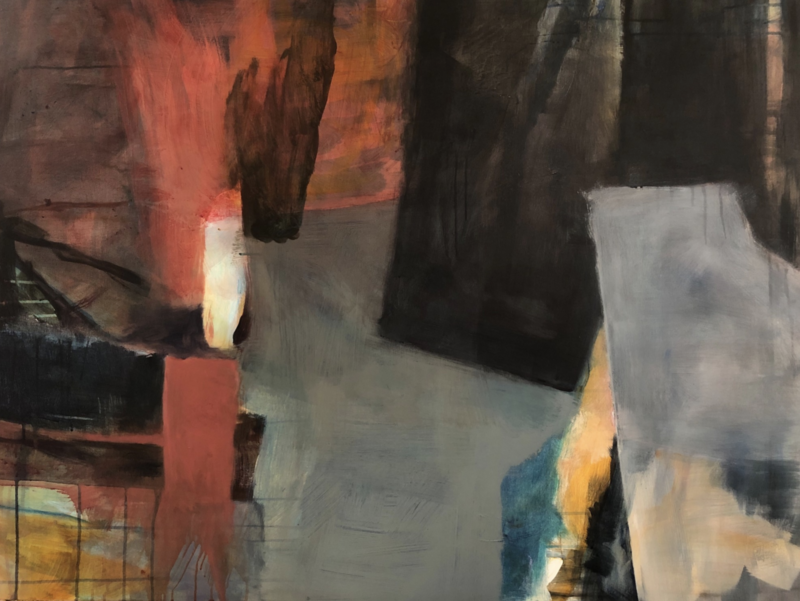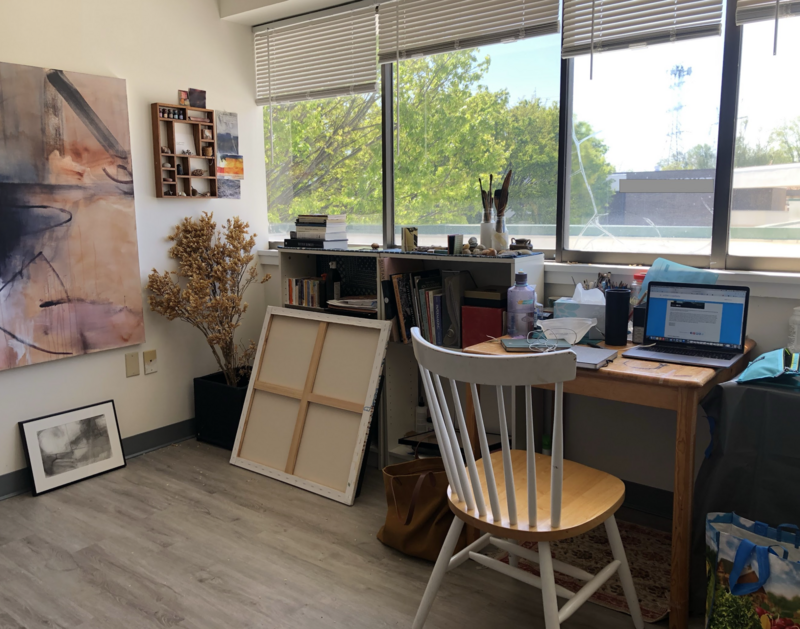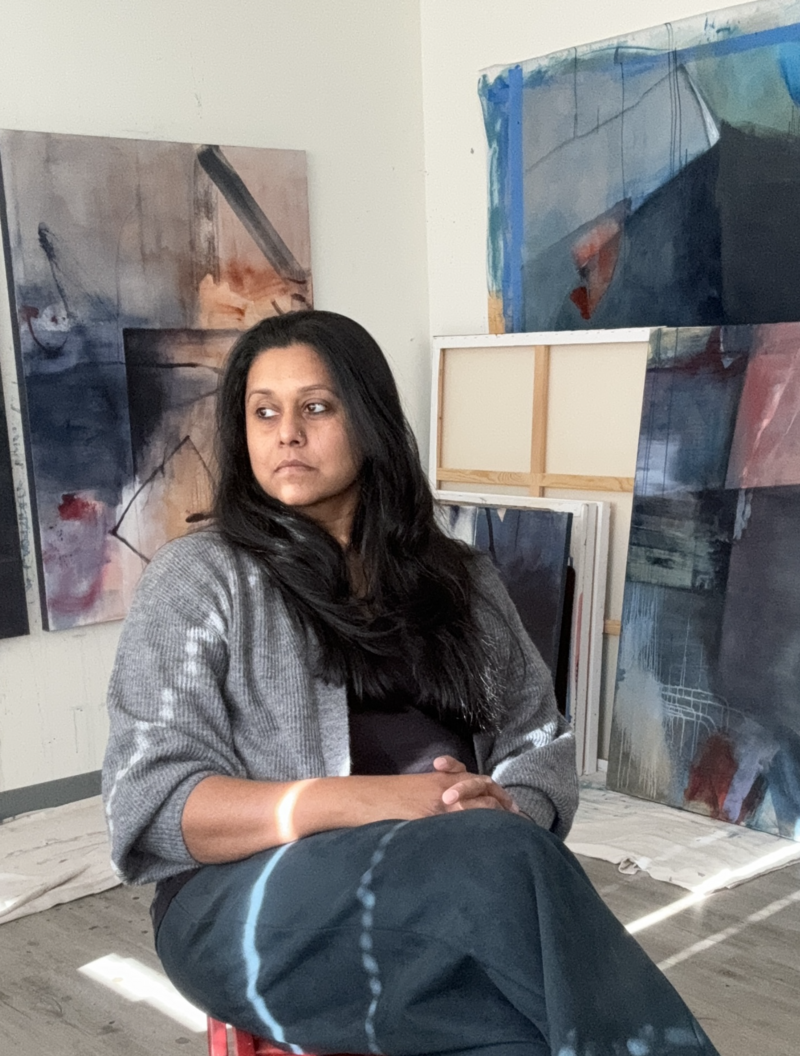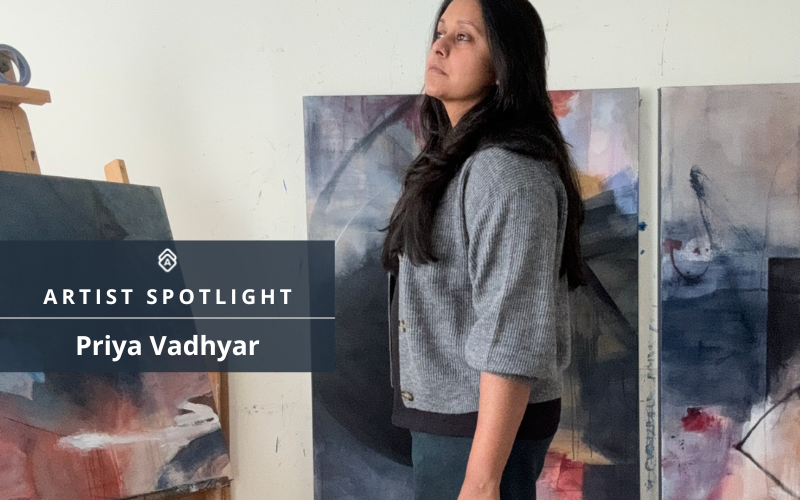
Featured Artist Priya Vadhyar's artwork is an inquiry into the boundaries of the self.
In her current work, Artwork Archive's Featured Artist Priya Vadhyar delves into what philosopher Loren Eiseley describes as one's "interior geography," examining the self's connection to the larger whole.
Her paintings are a testament to spontaneity and intuition, combining architectural forms, drips, washes, and fresh brushwork to create deeply layered pieces that invite you to wander alongside her.
Each piece is a dialogue between structure and freedom, the planned and the unplanned, as Priya navigates the delicate interplay between the self and the world beyond.
Describing her approach as a philosophy of wandering, Priya’s paintings capture moments of discovery—"using spontaneous action and intuition as a way of coming upon a scene rather than planning a destination."
Priya Vadhyar's work is a testament to the belief that art can reveal parts of ourselves we didn't know existed.
Artwork Archive had the chance to chat with Priya Vadhyar about her creative process, her adopted philosophy of "interior geography", and how Artwork Archive helps her manage her art career.
You can see more of her work on Discovery and learn more about her art practice below:
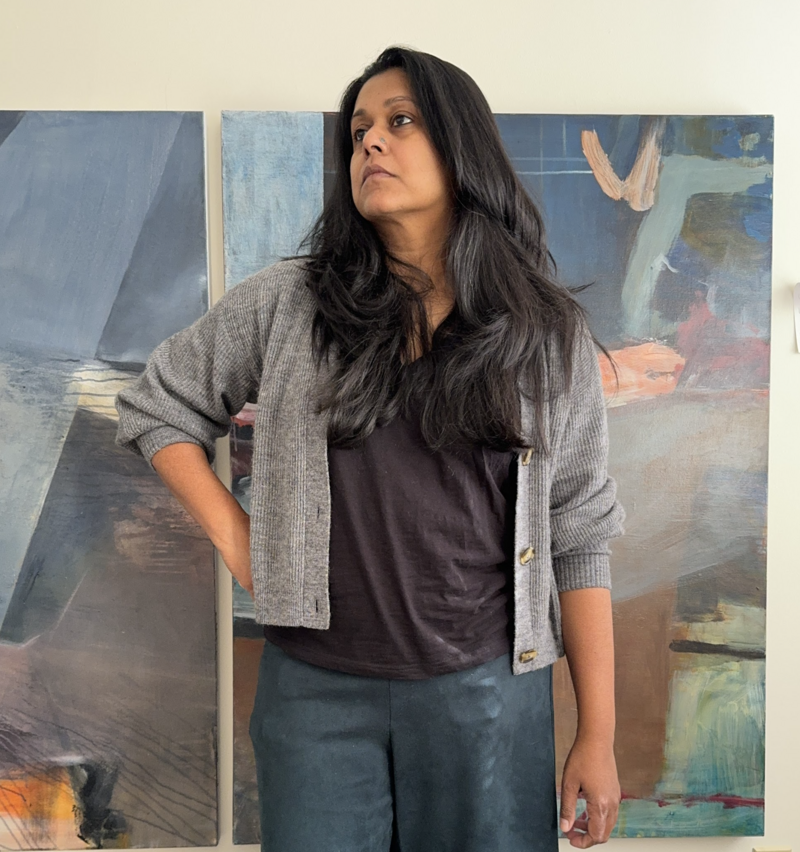
Priya Vadhyar in her studio. Image courtesy of the artist
How Artist Priya Vadhyar Lets Paint Be the Guide
For artist Priya Vadhyar, painting is an act of wandering. She approaches each canvas without a predetermined destination, allowing the work itself to guide her path. "When I begin working on a painting, I have no preconceived destination in mind," she explains. "Instead, each piece takes me where it must go."
Vadhyar's process begins with spontaneity. In these early stages, she immerses herself in mark-making, responding instinctively to what emerges on the canvas. As the work progresses, her approach shifts to a more analytical one, focusing on the formal properties of each piece.
"There often comes a time when I am stuck," Vadhyar shares. "Then, I put down my paintbrush and sit back to look for a way in." These moments of uncertainty, while challenging, often lead to unexpected discoveries. "It's the most challenging part of the process where my trust is tested the most," she notes, "but it's also the part I love because, time and time again, I find myself surprised by something I hadn't noticed before."
For Vadhyar, intuition plays a crucial role in her creative process. She describes it as "tuning into the frequency of the painting," suggesting that much of what guides her work exists beyond the surface level. Through this deep engagement, she navigates what she calls "a delicate balance between the paths I chose and those I stumbled upon, the accidents that became opportunities."
Vadhyar works a moment that she explains as her inner world aligning in perfect harmony with the outer world. – a mirror-like reflection between artist and canvas. She puts it most simply: "It feels right,"
Priya Vadhyar, In the Light of Darkness, 2019, 36 x 48 x 2 in
What WritersVirginia Woolf and Loren Eiseley Taught Priya About Her Own Work
At the heart of Priya Vadhyar's work lies an inquiry into the boundaries of self. Her paintings serve as windows into the delicate dance between inner and outer worlds, exploring what both separates and connects them.
"I'm deeply fascinated by how our inner landscape converses with the world around us," Vadhyar explains, "My paintings become a space where these conversations happen."
Her artistic journey has been profoundly shaped by literary giants: Virginia Woolf and Loren Eiseley.
The term "interior geography" originates from Eiseley, but Woolf first provided Vadhyar with a framework to understand her experiences. In Woolf's "To the Lighthouse," a scene describes the protagonist knitting at night, watching a lighthouse beam. The character discovers that letting go of self - becoming a "wedge of darkness" - opens doors to exploring the unknown. This moment in the text, where the character merges with the light, helped Vadhyar grasp the connection between mind and existence.
Eiseley's "The Mind as Nature" further shaped her perspective. His work suggests that mind and nature share a "dark vacuity" and a drive to create. He proposes that inner and outer worlds aren't separate but connected through permeable boundaries.
These concepts mirror Vadhyar's own understanding of existence.
As a process painter, Vadhyar describes her practice as "stepping through a doorway into a hidden realm filled with deep shadows and pools of light, where mysteries are both obscured and revealed."
In these solitary moments with brush and paint, she experiences a profound dissolution of boundaries – where inner and outer worlds merge into a singular, unified experience.
A peek inside Priya Vadhyar's studio. Image courtesy of the artist
Why Priya Built Studio/Line of Sight During the Pandemic
When the pandemic shifted teaching online, Vadhyar faced new territory. Her focus was clear: maintain strong learning while fostering connection. "I didn't want it to feel like a not-so-perfect situation that everyone had to tolerate for lack of options," she writes. She redesigned her approach by examining her own experiences as a learner.
This exploration led to unexpected joy in online workshops, sparking a larger vision. The result was Studio/Line of Sight, a platform for immersive art workshops featuring multiple artists.
"Teaching has become my second calling," she notes. "It has expanded my own creative process on so many levels." She explains how breaking down intuitive processes for others has deepened her relationship with art. The online format brought another benefit - connecting with artists worldwide.
"Being around other artists has taught me so much—about their work, motivations, and perspectives on the creative process," she reflects. She learns from each artist's studio practice and creative challenges. "This community of artists has become so dear to me. The circle widens and I am immensely grateful for it."
What She Wishes She Knew About Being an Artist Before Becoming One
Vadhyar speaks to the patience required in an artistic career. "I wish I knew that being a professional artist is a long game," she explains. The eagerness of early career artists often clashes with the reality that artistic growth happens gradually, through continuous evolution.
"Patience truly is a virtue when it comes to being an artist," she reflects. While time is essential for development, she acknowledges the value in youthful drive. That early urgency, she notes, plays its own role in artistic evolution - "a rushing forward, then a slowing down."
Priya Vadhyar inside her studio. Image courtesy of the artist
How Priya Defines the True Purpose of Art
There are often misunderstood aspects to being a professional artist. Vadhyar undesrtands that there are many people who see art simply as wall decoration, but she knows it reaches far beyond.
Art, in her view, opens doors to our dreams and enriches our daily experience. It becomes a bridge to unexplored parts of ourselves, taking many forms of beauty.
She summarizes it simply, but powerfully: "Art gives, and it continues to give."
Why She Chose Artwork Archive to Manage Her Art
After fifteen years of creating and exhibiting work, managing a growing body of work and a blooming career became a key focus for Vadhyar.
"When I came across Artwork Archive a few years ago, it was clear to me that it would be a huge help in organizing my inventory," she shares.
"As I explored all the other features, like creating Invoices, Private Rooms, and Catalog Pages, the decision to sign up was easy. I haven’t looked back and highly recommend it."
Artwork Archive is a simple, yet powerful tool designed by artists for artists:
Think of it as your go-to workspace where you can organize your art inventory, track where your pieces are exhibited or sold, create professional invoices, and even keep your collector contacts in one spot.
Explore more features here.
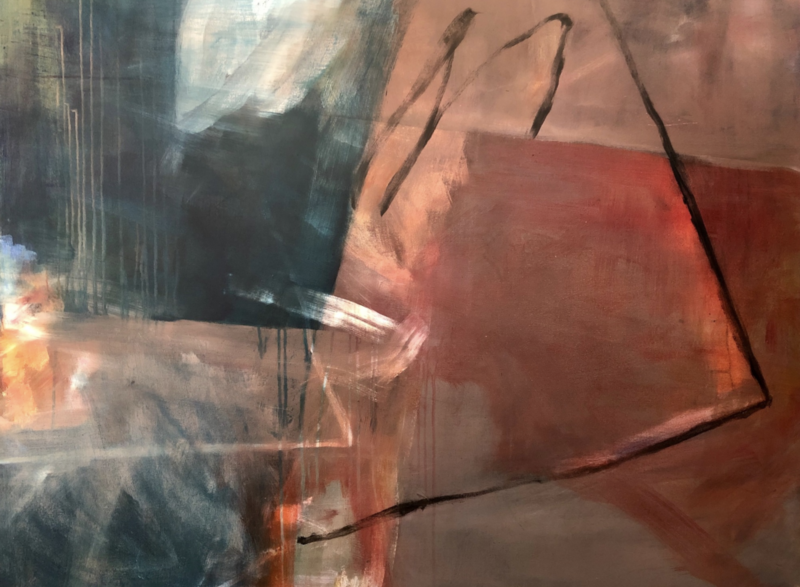
Priya Vadhyar, The Wall (Absent), 2019, 36 x 48 x 2 in
Priya Vadhyar's favorite Artwork Archive Feature
Private access to art collections has become central to Vadhyar's digital strategy. She uses Artwork Archive's Private Rooms feature to give her email subscribers exclusive first looks at new work, as demonstrated with her holiday collection of small paintings. "I was able to offer something exclusive to a group of people who support my work in more ways than one," she explains.
The platform's Portfolio Pages feature streamlines her communication with potential buyers. Instead of creating traditional documents, she can now generate professional presentations with just a few clicks, making art sharing both efficient and polished.
Create a Special Experience for Collectors:
Private Rooms let you share new collections or pieces with your biggest supporters—just like Priya did for her holiday collection.
You can add descriptions, pricing, and even let collectors comment or favorite their picks. It’s an easy way to give them a more personal, VIP experience that makes them feel valued.
Her Advice to Artists: Take Yourself and Your Work Seriously.
She extends her advice to new artists. She advises artists to know themselves in a world of extremes, "In a world that loves to glorify or vilify, dare to know yourself."
"The best thing about being an artist is being one: working on what you feel called to work on," she reflects. Her approach is practical and permission-giving: "There is no shame in having a day job. No shame in taking a break when life calls for one. No shame in asking for help."
For building a lasting practice, she emphasizes patience: "Find a way to sustain your studio practice—give it time, and don't rush to establish your style."
Her encouraging words embrace artists of every age: "And to those who come to art later in life—it's never too late."
Priya Vadhyar uses Artwork Archive to professionalize her practice, manage her inventory, showcase her work, and a lot more.
You can make an online portfolio, catalog your artwork, and generate reports like inventory reports, tear sheets, and invoices in seconds with Artwork Archive. Take a look at Artwork Archive's free trial and start growing your art business.
